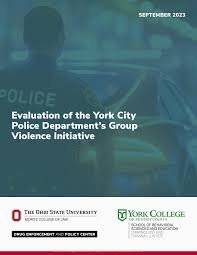By Mike McLively and Brittany Nieto
Oakland, considered for many years to be among the most dangerous cities in America, has cut its annual shootings and homicides nearly in half since 2012. Now, city leaders and activists from around the country are traveling to Oakland to learn from this remarkable success. Oakland gives us reason to hope that reducing gun violence in our most impacted communities is possible, and a basic framework for how to get there. In 2012, after several failures and facing great pressure from community activists, Oakland city leaders committed to launching a citywide violence reduction strategy, known as Oakland Ceasefire, with the help of technical experts from the California Partnership for Safe Communities (CPSC). Oakland Ceasefire is an ongoing partnership between community members, social service providers, and law enforcement officials, who work together to reduce violence, build police-community trust, and improve outcomes for high-risk individuals. The strategy has five main components: Analysis of violent incidents and trends, referred to as a problem analysis, to identify individuals at the highest risk of participating in serious violence. Oakland’s problem analysis revealed several misconceptions about the city’s violence dynamics. It also showed that only 400 individuals—just 0.1% of Oakland’s total population—were at the highest risk for engaging in serious violence at any given time. Oakland Ceasefire partners intervene with this population. Respectful, in-person communications with high-risk individuals to warn about the risks of ongoing violence and provide a genuine offer of assistance. With Oakland Ceasefire, these communications primarily take the form of call-ins, interventions in which stakeholders communicate with small groups of those most at risk of serious violence, and custom notifications, a personalized method of heading off imminent violence. Relationship-based social services are provided to high-risk individuals through the Oakland Unite network of community-based organizations. Oakland Unite is a unique city agency that uses taxpayer money to fund organizations that provide services like intensive mentoring, economic and educational training, and direct assistance to victims of violence and their families. Narrowly focused law enforcement actions by the Oakland Police Department’s (OPD) Ceasefire Section, in addition to ongoing, department-wide training in the principles of procedural justice and other strategies to improve police-community relationships. Since reforming its approach to violence, OPD has seen a dramatic increase in its homicide solve rate, while use-of-force incidents and complaints against the department are on the decline. An intentional management structure built around regular communication between Oakland Ceasefire partners and city leaders to stay on top of changing violence dynamics and track progress toward yearly violence reduction goals. Regular meetings include weekly shooting reviews, bimonthly coordination meetings, and performance reviews led by Oakland’s mayor.
Giffords Law Center, Faith in Action, and the Black and Brown Gun Violence Prevention Consortium, 2019. 107p/



